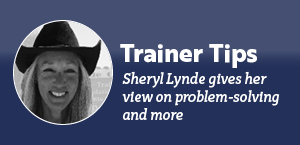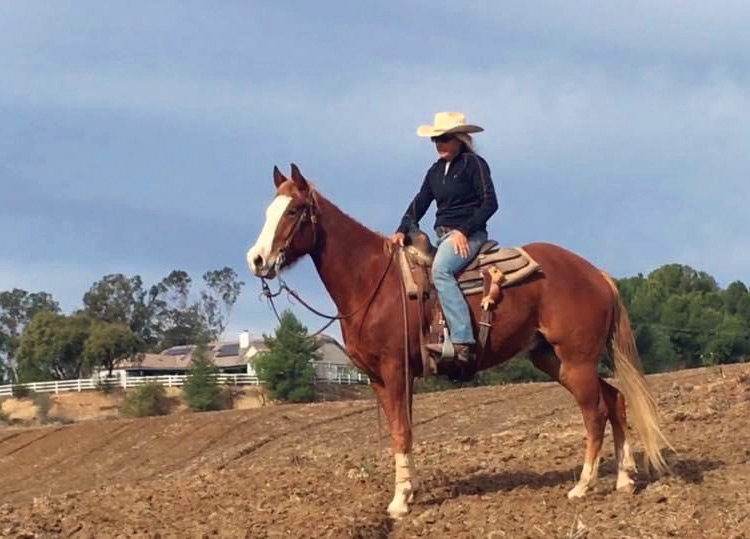By Sheryl Lynde | Horsetrader columnist

I always want to know why a horse does what he does. If he bucks…why? If he rears…why? Is he fearful…why?
This question kept me up at night as I thought about a troubled horse or colt that had come to me for help.
When Smokey arrived, he was a wreck waiting to happen. He was three at the time and had 30 days of prior training. He had a level of fear that was going to get someone hurt. I led him into the round pen to give him room and time to settle, but as I walked out he spooked and fell to the ground.
Leading or working him from a line on the ground was another challenge. Until Smokey came, I could work a horse through any issue on the ground without losing hold of the lead rope. But he would rear, twist and bolt and there was no getting his mind back until he had freed himself. What causes this level of fear?
His breeding could be a contributing factor. Some performance-bred youngsters can be more reactive. Pain may have contributed. During an oral exam, my vet removed caps that had caused him discomfort, evidenced by ulcerations on the inside of his cheeks. His teeth may have been more of an explanation for his rearing and flipping over backwards when I attempted to worm him, but what was the underlying cause of his fear?
A lack of trust.
Although he had been ridden, he wasn’t ready for it. I went back to ground work. I gave him an extra three weeks of dragging ropes, ground driving, working from the back of another horse, flapping stirrups and lateral work in the snaffle. I kept the pressure low, the repetitions few and the exercises and environments varied. I listened to what he needed each day and that was our lesson, my agenda was to give him the time he needed for each exercise. I took what he learned on the ground to the saddle. I was never critical of his movements, I allowed him to make mistakes and then offered corrections with the same demeanor as they were offered the day before. He started making good decisions which I richly rewarded with praise. His fear turned to trust. It’s taken 3 years, but I have worked and roped a cow off him, ridden tough mountain trails with tedious footing and introduced maneuvers such as flying leads in the arena. Nothing is perfect but he is always better today than he was yesterday. He taught me the underlying reason for his fear. It was a lack of trust. It’s not horse whispering; it’s horse listening.

Curiosity is defined as an eager wish to know or learn about something — the key words being “to LEARN about something.”
Being detail-oriented is a gift, but without discernment detail-oriented people can become perfectionists, concerned only with their way of reaching a goal. This eliminates opportunities to learn about the individual needs of each horse. Training becomes mechanical and underlying issues remain unresolved. The question of “why” gets lost in the need for control. Learning ceases, and resistance and resentment builds.
I’ve witnessed the after effects of an overly critical lesson on both the horse and the human.
In humans, I see it in their countenance — their expression belies their much-too-quick assurances of being “OK”. They hide humiliation by resisting eye contact.
In the horse, I see it in their eyes. From glazed or fixated to panicked. This is not a state of mind that induces learning in humans, nor is fear or helplessness a place in which the horse learns to trust.
I had two pastures: geldings in one, mares in the other. During a storm, I noticed that only one gelding stood in a shelter that could have fit six. Why? The dominant gelding was aggressive; his demeanor, unpredictable. His dominance was forcefully won with bared teeth or a kick. The other geldings would rather stand out in the rain than share the shelter with him. His pasture resonated with a feeling of apprehension.
The dominant mare had a regal, stoic presence about her. She gave clear boundaries and meted out discipline only when necessary, but never with undue force. The other mares felt safe in her company. There was order in her pasture, which fostered a palpable feeling of ease.
Both horses established their roles through different methods, but at what cost — and what reward?
“If your actions inspire others to learn more, do more and become more, you are a leader,” said John Quincy Adams.
Stay curious — you may just learn something.
–Sheryl
Leave a Comment
All fields must be filled in to leave a message.